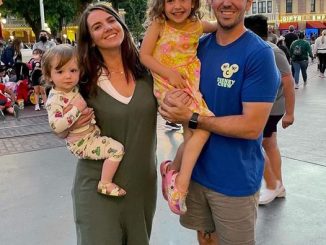
They have recommended that everyone in a household is familiar with the hurricane plans they’ve made. This may include catering for those at work, children’s daycare, and other frequently visited locations such as grocery stores.
Additionally, the government suggests that households should stock adequate supplies. Some recommended items are medications, disinfectants, and pet supplies that are carried in the go-bag or car trunk. Access to these supplies may be limited for days or even weeks after a hurricane.
Households also need to clear drains and gutters, secure outdoor furniture, and consider installing hurricane shutters. It is highly valuable to charge a cell phone and invest in backup charging devices for electronics when a hurricane is forecasted.
2. Stay Informed
In this step, it’s crucial for households to know if they live in an evacuation zone, listed at the end of this article, as they may need to evacuate quickly due to a hurricane. They should familiarize themselves with evacuation routes. They can also practice evacuating with their household and pets, and determine where they will stay.
Households should follow the guidance of local emergency managers, who collaborate with state, local, tribal, and territorial agencies. They will provide up-to-date recommendations based on the specific threats to your community and the necessary safety measures.
3. Check On Your Neighbors
Reach out to your neighbors, especially seniors or those who may require extra assistance, to ensure they have adequate hurricane plans in place. Offer your help in securing their preparations and provide support wherever needed.
4. Stay Out of Flood Water
Households should avoid entering floodwaters, as even six inches of fast-moving water can knock people off their feet. They should prioritize their safety and steer clear of any flooded areas.
5. Turn Around and Do Not Drown
People should be aware that just one foot of moving water can easily sweep away a vehicle. They should stay vigilant and avoid driving through flooded areas. Avoid walking, swimming, or driving through flood waters at all times. When encountering such a scenario, they should turn around.
6. Take Care of Your Mental Health
Lastly, individuals should prioritize their mental health during and after a hurricane. It’s important to acknowledge any feelings of anxiety or stress and seek support if needed. Connect with friends, family, or mental health professionals to discuss your concerns and find coping strategies.
Tampa Mayor Jane Castor has emphasized the need for households to pay attention to the evacuation zones as Hurricane Milton approaches Florida’s west coast. She warned the residents, “I can say without any dramatization whatsoever: If you choose to stay in one of those evacuation areas, you’re gonna die.”
Tampa is located in Hillsborough County. The region has listed compulsory evacuation orders for those in Zones A and B, as well as those who live in mobile homes. Tampa has urged residents of these areas to evacuate as Hurricane Milton is “literally catastrophic.”
Evacuation Zones
Charlotte County: It has issued a mandatory evacuation order for residents in Red Zone-A and Orange Zone-B, including those living in mobile and manufactured homes.
Citrus County: It has given a mandatory evacuation order that began on October 8, 2024, for all residents living in campers, tents, mobile homes, manufactured homes, or any structures unable to withstand sustained winds of up to 110 MPH.
Collier County: A voluntary precautionary evacuation is effective immediately for all residents in Collier County in Zones A and B. This includes west of Airport Pulling Road and south of US-41 Tamiami Trail E.
The order covers mobile home residents and areas with a history of storm flooding. A mandatory evacuation for all of Zones A and B began on October 8, 2024.
DeSoto County: It has issued evacuation orders for Zones A (Red) and B (Orange). These areas affect all residents living in mobile and manufactured homes, as well as those in low-lying or flood-prone areas.
Clay County: Currently, there are no mandatory evacuation orders, but residents in low-lying or flood-prone areas, especially along Black Creek or the St. Johns River, are strongly encouraged to consider relocating for safety.
Hardee County: On October 7, 2024, Hardee County Emergency Management advised residents in low-lying areas, mobile homes, recreational vehicles, and unsafe structures to evacuate as soon as possible.
Glades County: This county has implemented a voluntary evacuation for mobile homes, RV parks, and low-lying areas, which started on October 8, 2024.
Hillsborough County: This county has announced a mandatory evacuation for Evacuation Zones A and B, including all mobile homes and manufactured housing throughout the county, which started on October 7, 2024.
Hernando County: Mandatory evacuation orders for all areas west of US 19, including evacuation zones A, B, and C began on October 8, 2024. This includes all residents in coastal and low-lying areas, as well as those in manufactured homes countywide.
Levy County: A mandatory evacuation is in effect affecting all mobile homes, manufactured homes, recreational vehicle parks, coastal communities, and low-lying areas west of US 19. Hurricane risk shelters have opened at Bronson Elementary for special needs and Bronson Middle High School for general population/pet-friendly evacuations.
Lee County: It has issued mandatory evacuation orders for Zones A and B, urging residents to finalize emergency plans and evacuate as soon as possible. They should aim to be in a safe location by the evening of October 8, 2024.
Manatee County: This county has issued a mandatory evacuation for all residents in Levels A, B, and C, including visitors in RVs or mobile homes, effective October 7, 2024.
Marion County: The Marion County Sheriff’s Office Emergency Management officials have recommended evacuation for residents living in mobile homes, RVs, modular-type homes, and site-built homes constructed before 1994 due to the hurricane’s projected path.
Miami-Dade County: This county has announced a voluntary evacuation center for residents of mobile home parks, opening the E. Darwin Fuchs Pavilion on October 8, 2024, as a pet-friendly evacuation option.
Okeechobee County: A voluntary evacuation has been issued for all low-lying areas and mobile homes starting October 8, 2024.
Pasco County: This county has mandated evacuations for Zone C as the hurricane approaches. Evacuations are required for those in Zones A, B, or C, as well as residents in manufactured homes, RVs, low-lying areas, or structures prone to flooding.
Volusia County: A mandatory evacuation order took effect on October 9, 2024, for all areas east of the Intracoastal Waterway, including residents in manufactured and mobile homes, low-lying and flood-prone areas, as well as campsites and RV parks.
Sumter County: Residents in mobile homes, low-lying areas, or with special needs are strongly urged to consider evacuation or relocating to a shelter when they open.
Sarasota County: Residents in Sarasota County living in Level A or near Level A, as well as those in manufactured home communities or mobile/boat homes, are advised to implement their evacuation plans immediately, whether that involves staying with friends or leaving the area.
Pinellas County: Pinellas County has enacted a mandatory evacuation order for all residents in Zones A, B, and C, as well as all mobile homes. Special needs residents and residential healthcare facilities in these zones are also included in the evacuation order.
Putnam County: A recommended evacuation has been issued for Zones F and A due to concerns regarding high river levels.
Obeying the directives issued by local authorities and noting the evacuation zones ensures that families can evacuate safely and efficiently. This also allows emergency services to respond effectively to those in need.
13 Celebrities Who Changed Their Real Names Before Becoming Famous
Sometimes we are given names that are either too hard to pronounce or too long to keep in their entirety. And if you are someone with a normal 9-5 job, that is completely fine. But, if you are someone in the entertainment industry who wants your name to be known by everyone, this may not be the best thing. That’s why many people choose to either shorten their full names or completely change them.
1. Miley Cyrus
Miley Cyrus legally changed her name back in 2008 from Destiny Hope Cyrus to Miley Cyrus. The name Miley is a rendition of her childhood nickname “Smiley” in honor of her paternal grandfather.
2. Victoria Beckham

Prior to becoming known as the fashion diva, Victoria Beckham, back in the early days of the iconic group we love, Victoria Adams was the name used for her records. However, when the Spice Girls became rising stars, she changed her name to Posh Spice. Years later, she become the famous Victoria Beckham we know today.
3. Vin Diesel

At the age of 17, Mark Sinclair was a rather big guy. He even used to work as a bouncer at a nightclub called The Tunnel. Around that time he took the name Vin Diesel and started to shave his head regularly.
4. Rachel Weisz

Early in her career, she changed her name to Rachel Vyce, but when people told her that it was too difficult to pronounce, she changed it to Kenya Campbell. She decided to keep it that way for a while, but she soon realized that it sounded unpleasant. The actress then decided to stay with Rachel Weisz and made a lot of iconic movies.
5. Natalie Portman

It was in 1994 when a very young Neta-Lee Hershlag auditioned for Leon and landed her first role in a major production. While filming, the actress changed her name to “Natalie” and took her mother’s maiden last name. Apparently, she wanted to maintain her privacy because some scenes in the movie were polemical.
6. Alicia Keys

Her real name is Alicia Augello-Cook, but she changed it and decided to have her own different stage name with a special meaning behind it. She explained, “It’s like the piano keys, and it can also open a lot of doors,” and she ended up with the name Alicia Keys and broke multiple records in her career.
7. Jamie Foxx

Eric Marlon Bishop, now known as Jamie Foxx, tried out a couple of different names when he first started doing open mic nights. When he’d sign up to the open mic lists, he used the names Tracy Brown and Stacy Green but eventually landed on Jamie Foxx.
8. Iggy Azalea

Her birth name is Amethyst Amelia Kelly, and she ended up with Iggy Azalea because she has a dog named “Iggy,” and it became her nickname. She came up with the surname Azalea, as she explained, “Because that is a street name that my mom and family live on, and it sounds very feminine, and I thought it would balance out Iggy being so masculine.”
9. Lana Del Rey

The singer’s real name is Elizabeth Woolridge Grant, but she’s now known as Lana Del Rey. When she began singing, she went by the name, “Lizzy Grant,” and also performed as “Sparkle Rope Jump Queen” until she landed on Lana Del Rey.
10. Tom Hardy

Before becoming Tom Hardy, his birth name was Edward Thomas Hardy, and he only used his first name before deciding to go by his middle name instead. Even though the Internet was aware of his true identity, it was not widely publicized.
11. Blake Lively

After Blake became an actress she decided to take the surname of her mother, Elaine Lively as her stage name.
12. Aaron Paul

His full name is Aaron Paul Sturtevant, but when he went to auditions, no one could pronounce his surname, “Sturtevant,” so he had to change it so that everyone could say it, and then he shortened it when he entered Hollywood.
13. Lorde

Lorde changed her original name at the age of 12 when she was signed to a development contract with the Universal Music Group after an agent of theirs saw footage of her singing at a middle school talent show. Her real name is Ella Marija Lani Yelich-O’Connor. The royalty hidden in the name Lord encouraged her in changing her original name, but she also added an “e” because she felt that Lord would be too masculine for a girl.
Preview photo credit Laurent VU/SIPA/Sipa Press Russia/East News, mileycyrus / Instagram



Leave a Reply